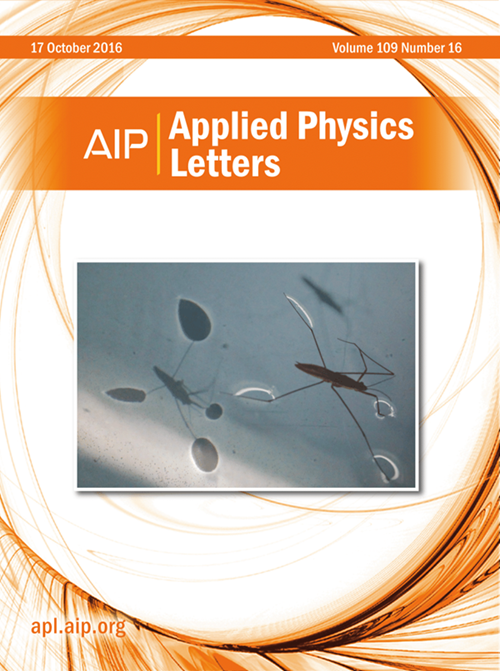熵与气体传感器有关吗?用尖晶石(CuCoNiCrMn)3O4进行NO2检测
IF 3.5
2区 物理与天体物理
Q2 PHYSICS, APPLIED
引用次数: 0
摘要
近年来,高熵氧化物(HEOs)由于其多元素结构所产生的协同效应而备受关注。在这项研究中,我们研究了尖晶石(CuCoNiCrMn)3O4 HEO作为NO2的选择性传感器。对其晶体结构、微观形貌、元素信息和气敏性能进行了全面的研究。气体传感器测试表明,(CuCoNiCrMn)3O4 HEO对NO2具有显著的选择性响应。为了进一步探索熵对传感器性能的影响,还合成了中熵Mn0.2Ni0.8Fe2O4、Ni0.99Co0.01Mn0.01Fe1.99O4和低熵NiMn2O4并对其进行了评价。实验和密度函数理论研究都表明,(CuCoNiCrMn)3O4 HEO具有优异的传感性能,这是由于(CuCoNiCrMn)3O4 HEO中的Co原子与NO2中的O原子之间的电荷转移增强和显著的轨道杂化。这项工作解决了构型熵(ΔSconfig)与气体传感特性之间的关系,从而推进了HEO材料用于高性能传感器应用的探索。本文章由计算机程序翻译,如有差异,请以英文原文为准。
Is entropy relevant to gas sensor? The case of spinel (CuCoNiCrMn)3O4 for NO2 detection
In recent years, high-entropy oxides (HEOs) have attracted significant attention owing to the synergistic effects arising from their multi-elemental structure. In this study, we investigate spinel (CuCoNiCrMn)3O4 HEO as a selective sensor for NO2. A comprehensive investigation of its crystal structure, micromorphology, elemental information, and gas sensing properties has been conducted. Gas sensor tests show that the (CuCoNiCrMn)3O4 HEO delivers a dramatic and selective response to NO2. To further explore the impact of entropy on sensor properties, medium-entropy Mn0.2Ni0.8Fe2O4, Ni0.99Co0.01Mn0.01Fe1.99O4 and low-entropy NiMn2O4 have also been synthesized and evaluated. Both experimental and density function theory studies demonstrate that the (CuCoNiCrMn)3O4 HEO exhibits superior sensing performance, attributable to enhanced charge transfer and significant orbital hybridization between Co atoms in (CuCoNiCrMn)3O4 HEO and O atoms in NO2. This work addresses the relationship between configuration entropy (ΔSconfig) and gas sensing properties, thereby advancing the exploration of HEO materials for high performance sensor applications.
求助全文
通过发布文献求助,成功后即可免费获取论文全文。
去求助
来源期刊

Applied Physics Letters
物理-物理:应用
CiteScore
6.40
自引率
10.00%
发文量
1821
审稿时长
1.6 months
期刊介绍:
Applied Physics Letters (APL) features concise, up-to-date reports on significant new findings in applied physics. Emphasizing rapid dissemination of key data and new physical insights, APL offers prompt publication of new experimental and theoretical papers reporting applications of physics phenomena to all branches of science, engineering, and modern technology.
In addition to regular articles, the journal also publishes invited Fast Track, Perspectives, and in-depth Editorials which report on cutting-edge areas in applied physics.
APL Perspectives are forward-looking invited letters which highlight recent developments or discoveries. Emphasis is placed on very recent developments, potentially disruptive technologies, open questions and possible solutions. They also include a mini-roadmap detailing where the community should direct efforts in order for the phenomena to be viable for application and the challenges associated with meeting that performance threshold. Perspectives are characterized by personal viewpoints and opinions of recognized experts in the field.
Fast Track articles are invited original research articles that report results that are particularly novel and important or provide a significant advancement in an emerging field. Because of the urgency and scientific importance of the work, the peer review process is accelerated. If, during the review process, it becomes apparent that the paper does not meet the Fast Track criterion, it is returned to a normal track.
 求助内容:
求助内容: 应助结果提醒方式:
应助结果提醒方式:


